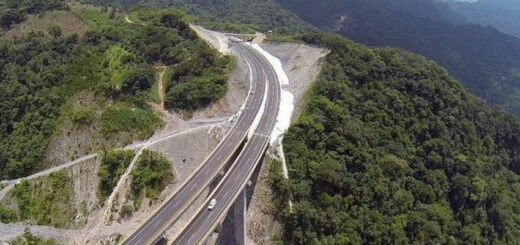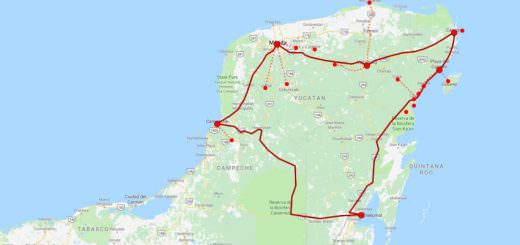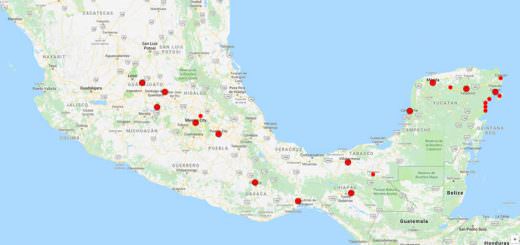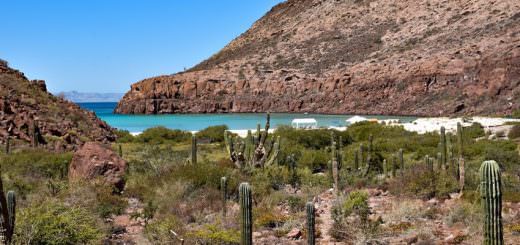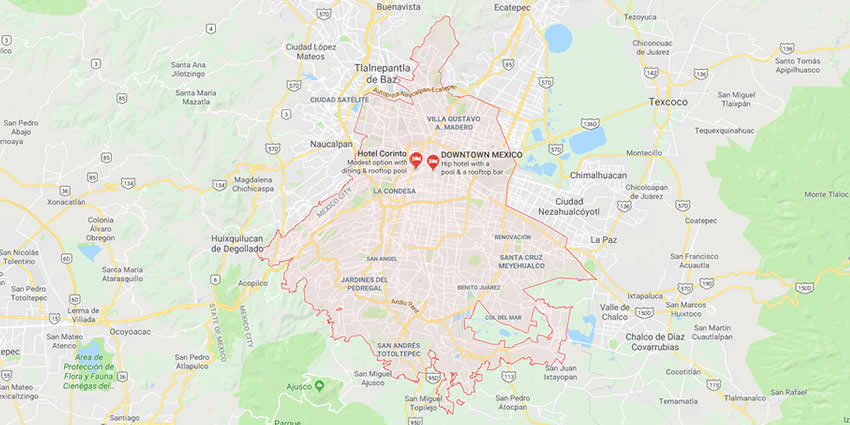
Mexico City Metropolitan Area
Greater Mexico City refers to the conurbation around Mexico City, officially called Valley of Mexico Metropolitan Area (Zona Metropolitana del Valle de México or ZMCM).
Greater Mexico City constituted by Mexico City (composed of 16 boroughs) and 49 adjacent municipalities of Mexico State and 1 munisipality of Hidalgo state.
For normative purposes, however, Greater Mexico City most commonly refers to the Metropolitan Area of the Valley of Mexico (Zona Metropolitana del Valle de México) an agglomeration that incorporates 18 additional municipalities.
As of 2016 more than 21 millions people lived in Greater Mexico City, making it the largest metropolitan area in North America.
It is surrounded by thin strips of highlands which separate it from other adjacent metropolitan areas, of which the biggest are Puebla, Toluca, and Cuernavaca-Cuautla, and together with which it makes up the Mexico City megalopolis.
Since the 1940s there have been different proposals to establish the limits of the growing conurbation of Mexico City, and different definitions were used unofficially as the city continued to grow.
The Federal Government, the government of Mexico City, and the government of the State of Mexico agreed on the official definitions for both the Mexico City Metropolitan Area and the Metropolitan Area of the Valley of Mexico on 22 December 2005. Per the agreement, most urban planning projects will be administered by Metropolitan Commissions.
On January 29, 2016, Mexico City proper was no longer called the Federal District (“Distrito Federal” or D.F.). It is now in transition to become the country’s 32nd federal entity, officially “City of Mexico” (“Ciudad de Mexico” or CDMX), giving it a level of autonomy comparable to that of a state.
Because of a clause in the Mexican Constitution, however, since it is the seat of the powers of the federation, it can never become a state, or the capital of the country has to be relocated. The English name “Mexico City” remains. Its original 16 “Boroughs” became “municipalities”.
Mexico City Metropolitan Area
The term “metropolitan area” was coined and developed in the United States from the 1920s and is used most often to refer to a “large” city whose limits exceed those of the political-administrative unit that originally contained it; in the case of Mexico, this unit is the municipality.
Mexico City former 16 “boroughs” now became “municipalities”
Álvaro Obregón
Azcapotzalco
Benito Juárez
Coyoacán
Cuajimalpa
Cuauhtémoc
Gustavo A. Madero
Iztacalco
Iztapalapa
Magdalena Contreras
Miguel Hidalgo
Milpa Alta
Tláhuac
Tlalpan
Venustiano Carranza
Xochimilco
The 49 of 125 municipalities of the State of Mexico
Acolman
Amecameca
Apaxco
Atenco
Atizapán de Zaragoza
Atlautla
Axapusco
Ayapango
Chalco
Chiautla
Chicoloapan
Chiconcuac
Chimalhuacán
Coacalco de Berriozábal
Cocotitlán
Coyotepec
Cuautitlán
Cuautitlán Izcalli
Ecatepec de Morelos
Ecatzingo
Huehuetoca
Hueypoxtla
Huixquilucan
Isidro Fabela
Ixtapaluca
Jaltenco
Jilotzingo
Juchitepec
La Paz
Melchor Ocampo
Naucalpan de Juárez
Nextlalpan
Nezahualcóyotl
Nicolás Romero
Nopaltepec
Otumba
Ozumba
Papalotla
San Martín de las Pirámides
Tecámac
Temamatla
Temascalapa
Tenango del Aire
Teoloyucan
Teotihuacán
Tepetlaoxtoc
Tepetlixpa
Tepotzotlán
Tequixquiac
Texcoco
Tezoyuca
Tlalmanalco
Tlalnepantla de Baz
Tonanitla
Tultepec
Tultitlán
Valle de Chalco Solidaridad
Villa del Carbón
Zumpango
One conurbation municipality of the State of Hidalgo
Tizayuca
Intrastate regions of Mexico City metropolitan area
Another way to visualize these municipalities is by their intrastate regions. The Mexico City Metropolitan Area fully covers 5 regions (regiones naturales) in Mexico State, partly covers another 5 regions, the Federal District, and 1 municipality in Hidalgo.
The following regions of Mexico State lie completely within this metropolitan area:
Region XIV (Mexico State) (Tultitlan, 6 municipalities)
Region XI (Mexico State) (Texcoco, 7 municipalities)
Region XII (Mexico State) (Tlalnepantla,2 municipalities)
Region IX (Mexico State) (Nezahualcoyotl, 1 city)
Region III (Mexico State) (Chimulhuacan, 4 municipalities)
Metropolitan Area of the Valley of Mexico
The definition of the Mexico City Metropolitan Area is positive, in that all municipalities form a single conurbation. By contrast, the Metropolitan Area of the Valley of Mexico is considered a normative definition, in that it incorporates 18 additional strategic municipalities in the territorial administration of the region, even if they have not been fully integrated yet. Many urban projects, mostly related to the improvement of air quality and water sanitation, are coordinated for all constituent municipalities of this agglomeration. The majority of the population reports of urban areas in Mexico refer to this agglomeration, and not to the MCMA conurbation.
Amecameca
Apaxco
Atlautla
Axapusco
Ayapango
Ecatzingo
Hueypoxtla
Isidro Fabela
Jilotzingo
Juchitepec
Nopaltepec
Otumba
Ozumba
Temascalapa
Tenango del Aire
Tepetlixpa
Tequixquiac
Villa del Carbón
Municipalities within the Mexico City metropolitan area (MCMA)
All municipalities are within the Metropolitan Area of the Valley of Mexico. Together these 10 intrastate regions cover every single municipality within the Valley of Mexico Metropolitan Area except for the 1 municipality in Hidalgo State. (59 municipalities):
Region I (Mexico State) (Amecameca, 13 municipalities)
Region VIII (Mexico State) (Naucalpan, 5 municipalities)
Region IV (Mexico State) (Cuautitlan Izcalli, 5 municipalities)
Region V (Mexico State) (Ecatepec, 9 municipalities)
Region XVI (Mexico State) (Zumpango, 7 municipalities incl 1 new.)
Geography and environment
Greater Mexico City spreads over the valley of Mexico, also called the valley of Anáhuac, a 9,560 km² (3,691 sq mi) valley that lies at an average of 2,240 m (7,349 ft) above sea level.
Originally, a system of interconnected lakes occupied a large area of the valley, of which Lake Texcoco was the largest. Mexico City was built on the island of Tenochtitlan in the middle of the lake.
During conquest of Mexico the dikes that protected the city from recurrent floods were destroyed and colonial authorities preferred to drain the water of the lake, which was, for the most part, shallow.
In 1900 president Porfirio Díaz inaugurated the Valley’s System of Drainage that hinders the growth of water bodies in the valley (and prevents floods). The basin of the valley of Mexico was thus integrated artificially to the Moctezuma river basin which connects to the Pánuco River.
The last remnants of the system of lakes are found in the boroughs of Xochimilco and Tláhuac, and in the municipality of Atenco.
The valley of Mexico is surrounded by mountains on all four sides creating a basin with only one small opening at the north, trapping all exhaust emissions of the city. At the southern part of the basin the mountain range reaches an altitude of 3,952 m (12,965 ft) above sea level; and to the east the volcanoes reach an altitude of more than 5,000 m (16,000 ft).
The region receives anti-cyclonic systems, producing weak winds that do not allow for the dispersion of accumulated air pollutants, produced by the 50,000 industries operating in Greater Mexico City and the 4 million vehicles circulating in its roads and highways.
Tourist Assistance + Emergency Numbers
You can dial 078 from any phone, where you can find free information about tourist attractions, airports, travel agencies, car rental companies, embassies and consulates, fairs and exhibitions, hotels, hospitals, financial services, migratory and other issues.
Or dial the toll-free (in Mexico) number 01-800-006-8839.
You can also request information to the email correspondencia@sectur.gob.mx
MORE EMERGENCY NUMBERS:
General Information: 040 (not free)
National Emergency Service: 911
Radio Patrols: 066
Police (Emergency): 060
Civil Protection: +52(55)5683-2222
Anonymous Complaint: 089
Setravi (Transport Mobility): +52(55)5209-9913
Road Emergency: 074
Cruz Roja: 065 o +52(55)5557-5757
Firefighters: 068 o +52(55)5768-3700
Let us know if this article was useful for you


















